Abstract
The interaction between instrumental behavior and environment can be conveniently described at a molar level as a feedback system. Two different possible theories, the matching law and optimization, differ primarily in the reference criterion they suggest for the system. Both offer accounts of most of the known phenomena of performance on concurrent and single variable-interval and variable-ratio schedules. The matching law appears stronger in describing concurrent performances, whereas optimization appears stronger in describing performance on single schedules.
Keywords: matching law, optimization, cost-gain analysis, concurrent schedules, single schedules
Full text
PDF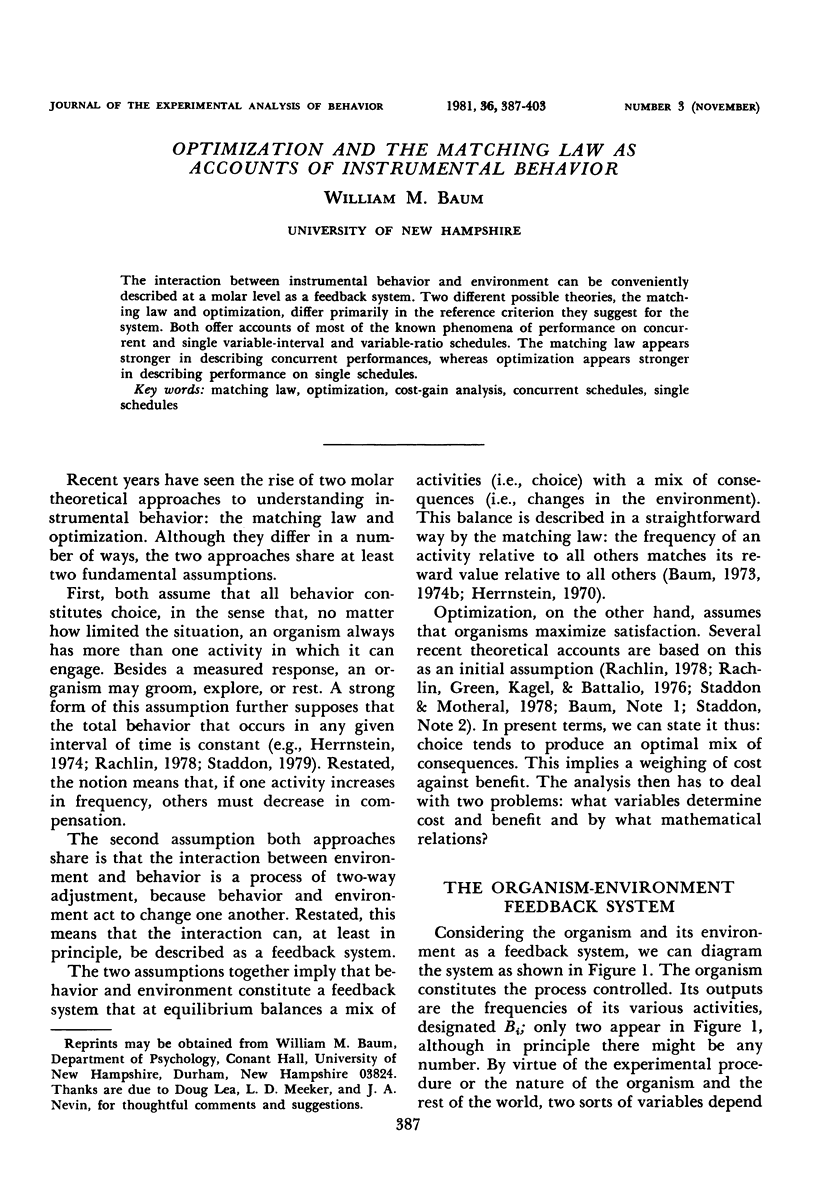
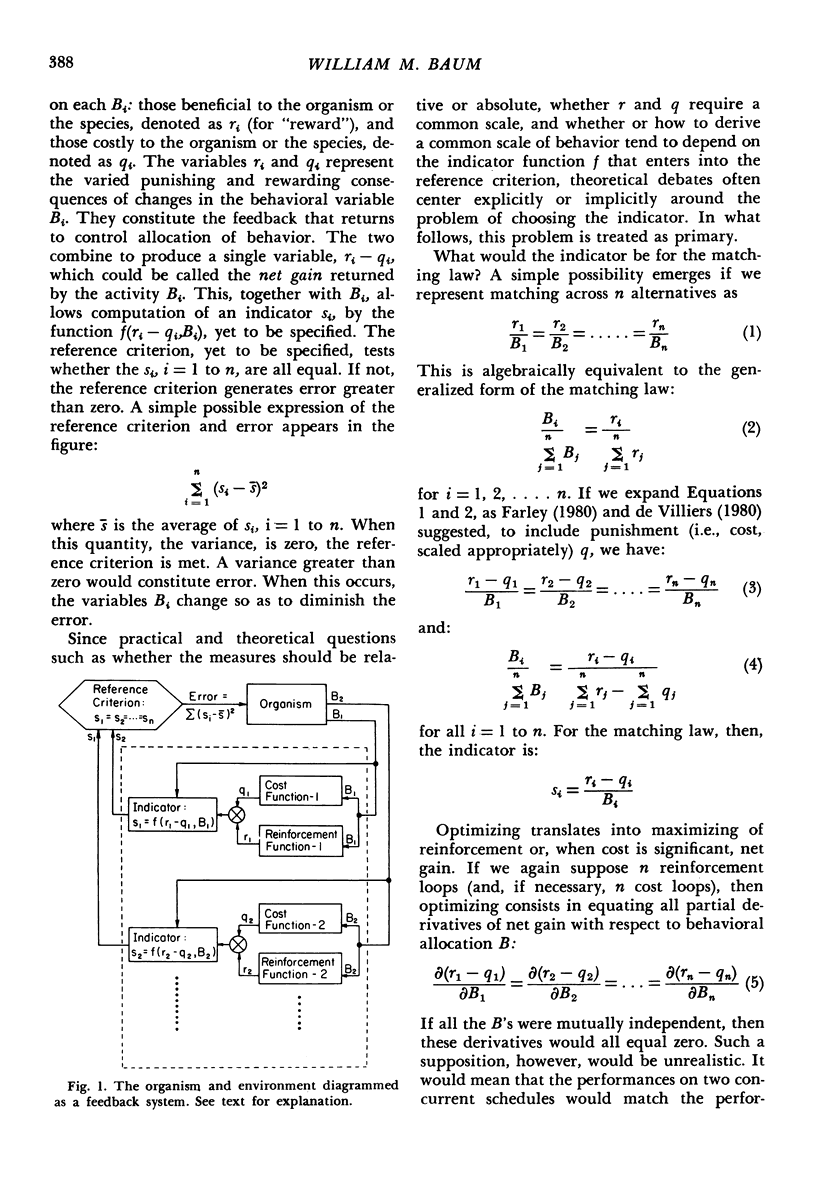
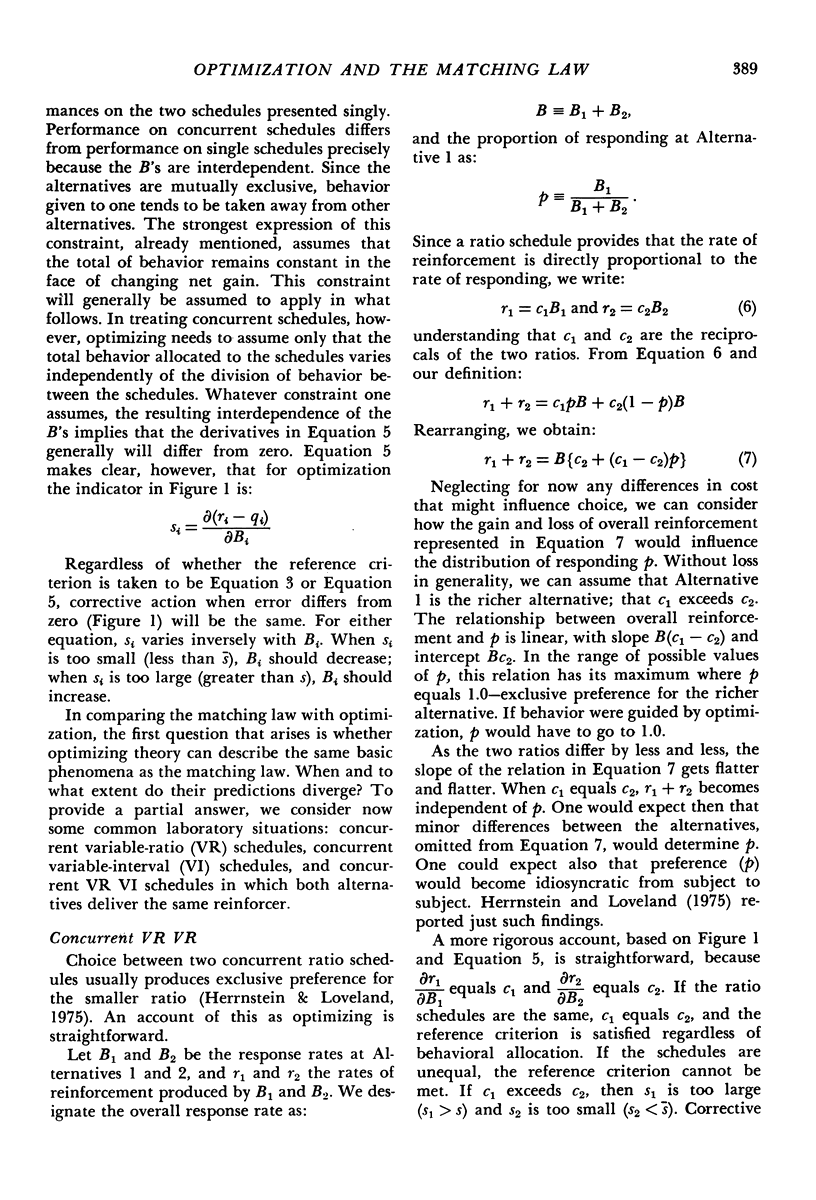
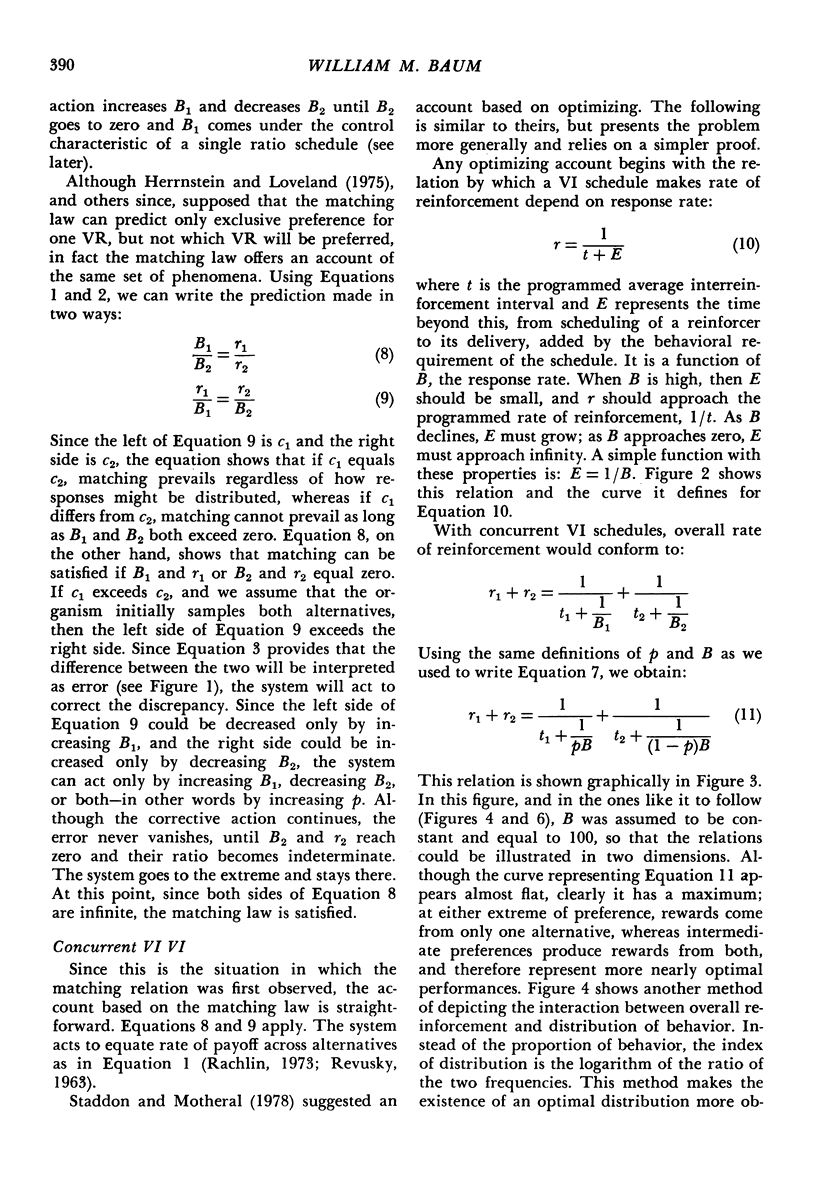
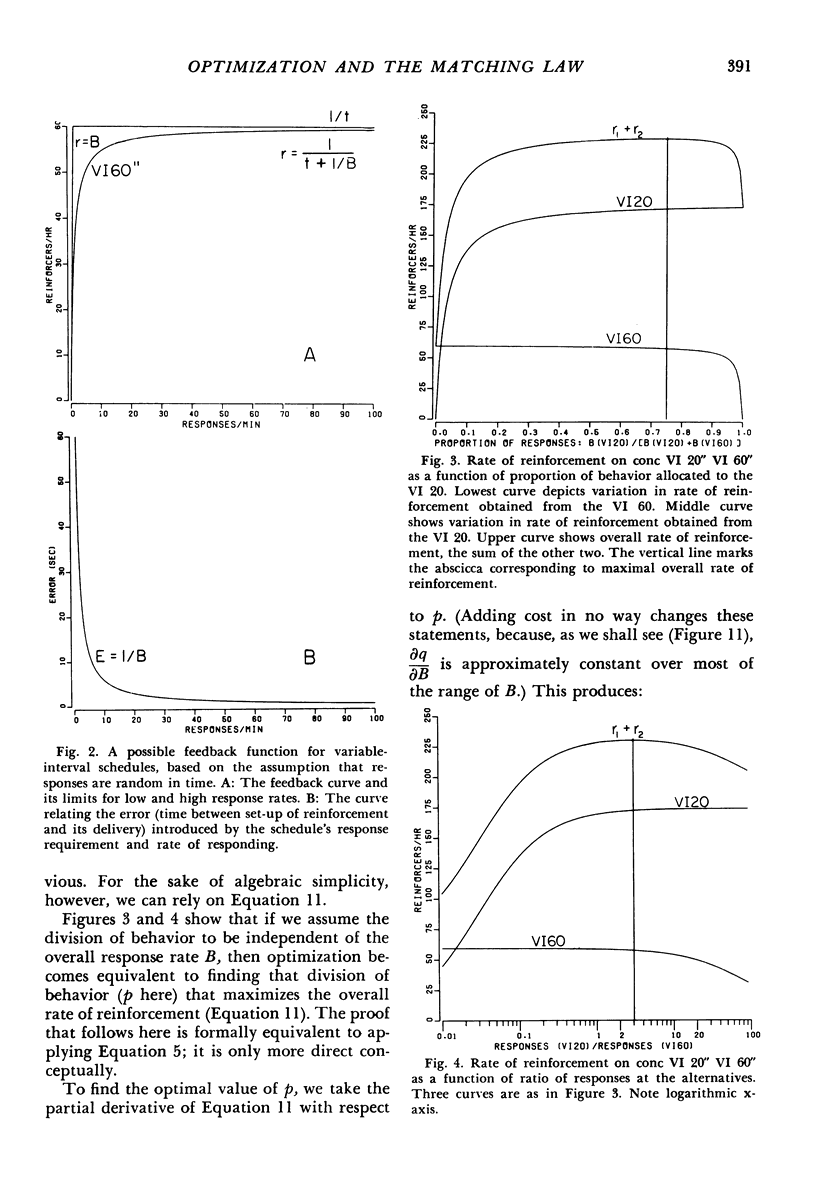
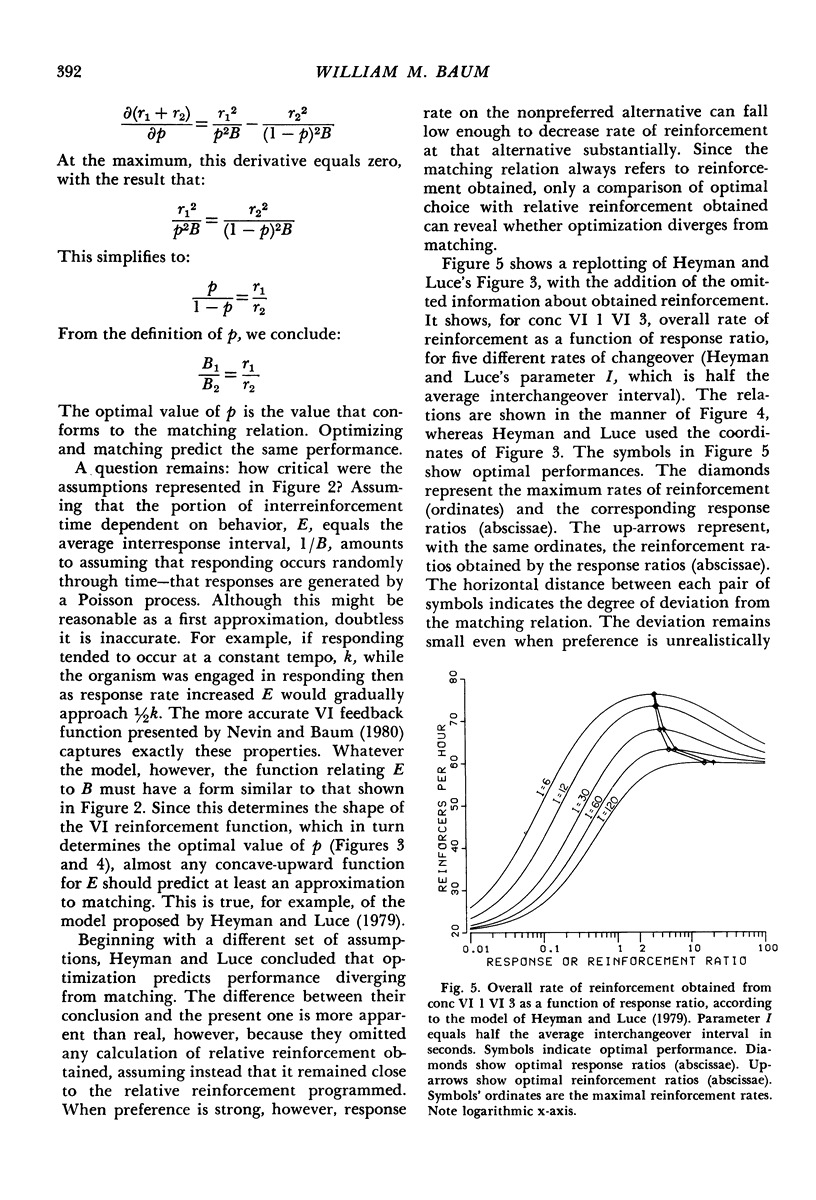
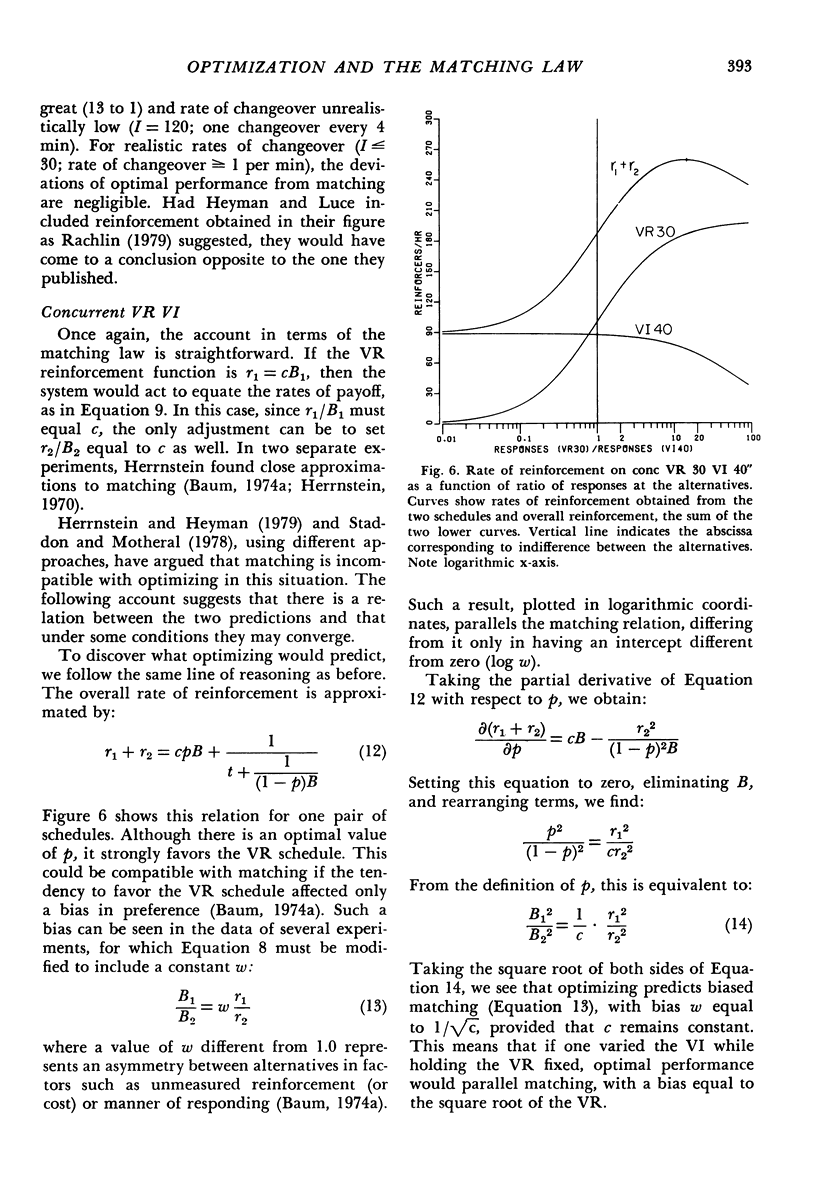
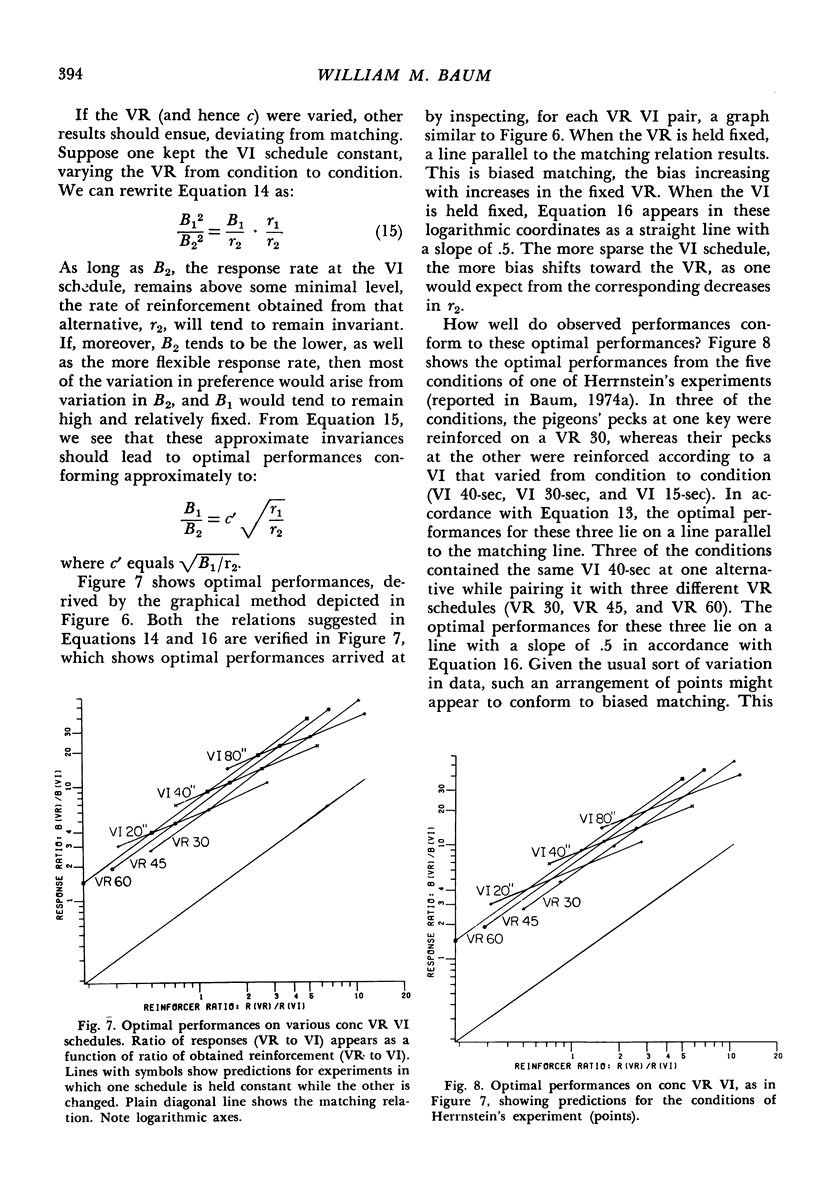
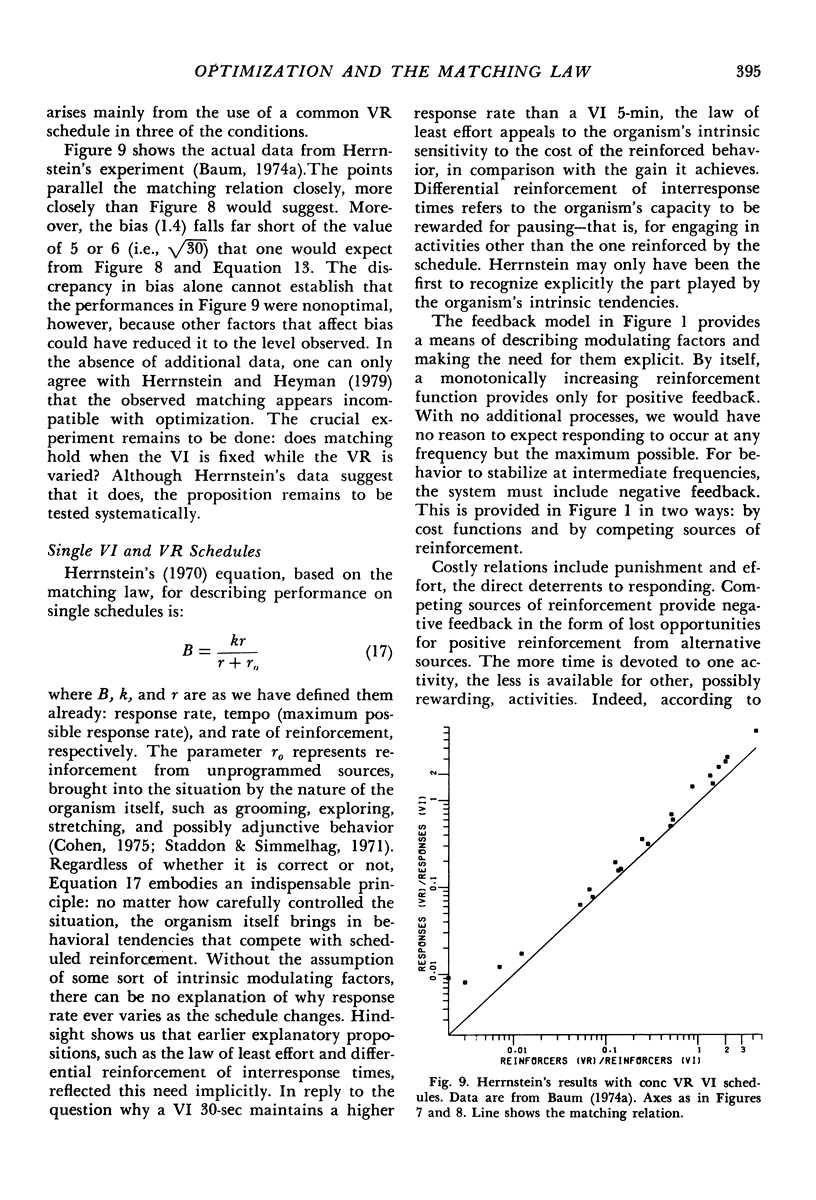
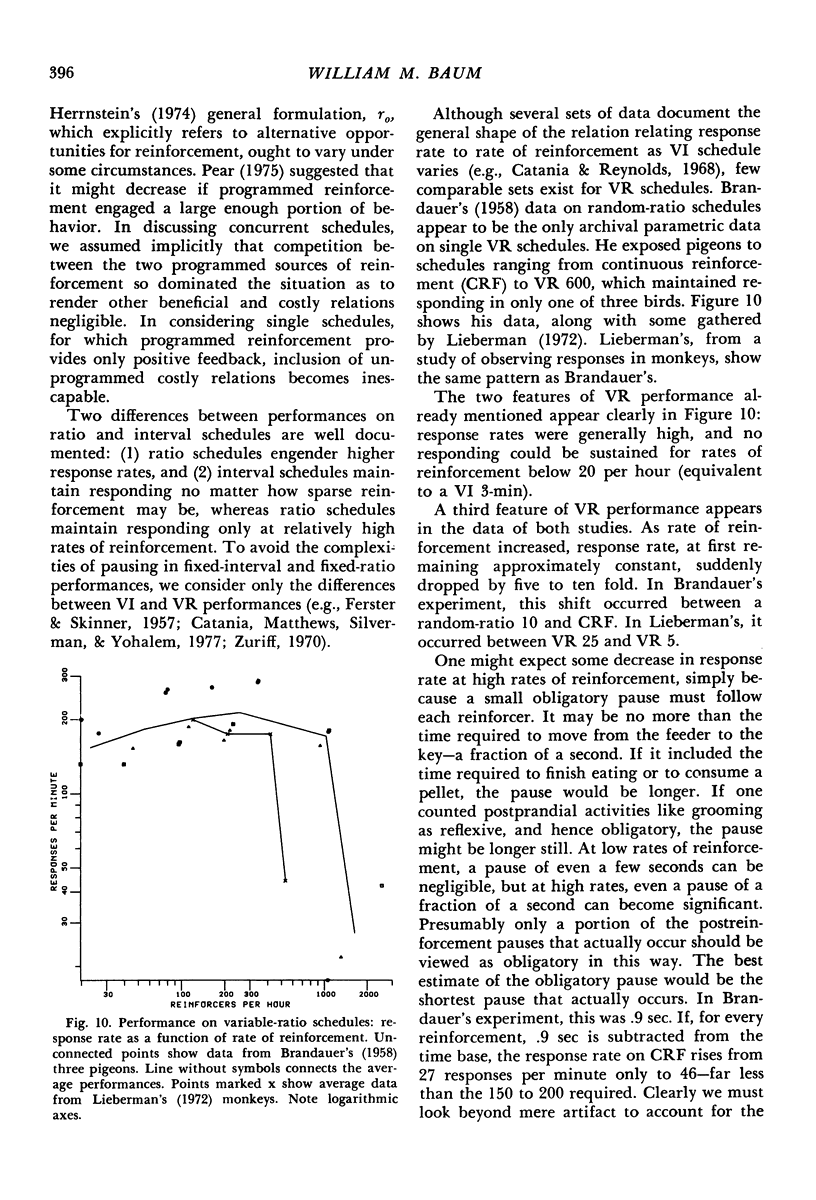
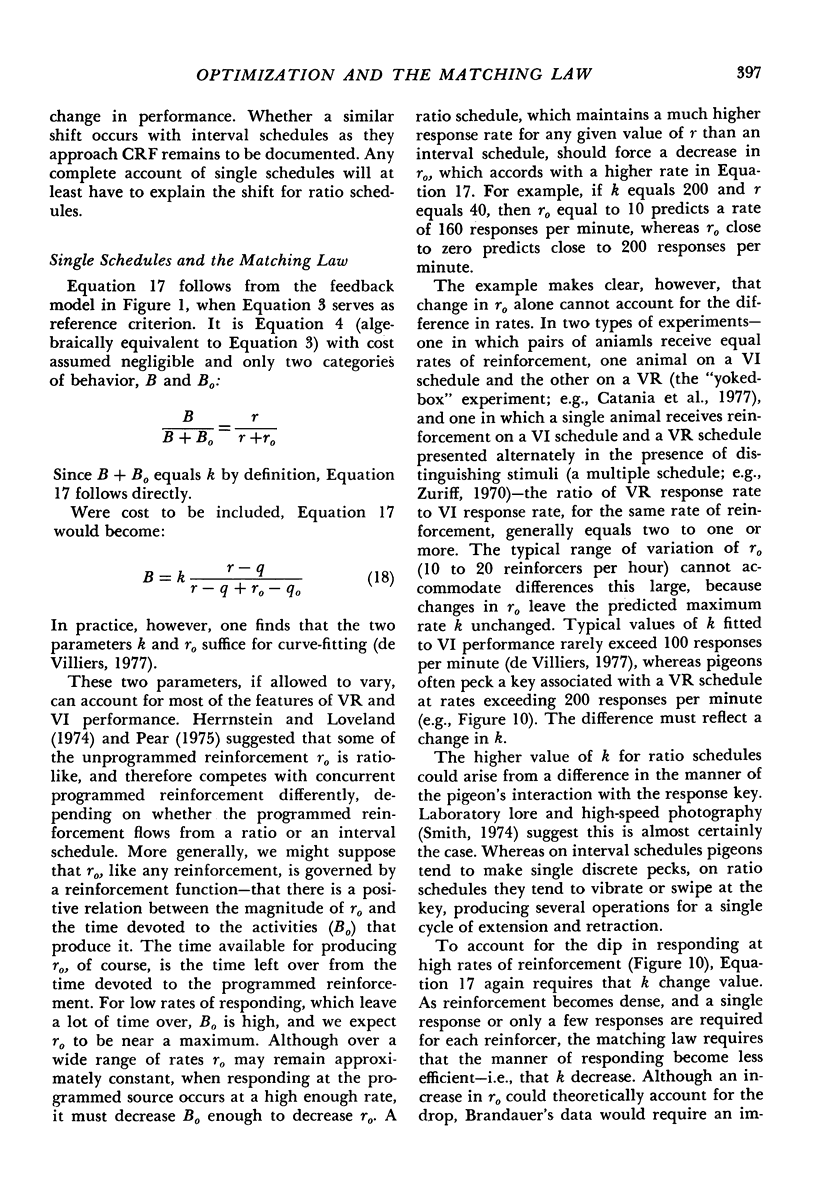
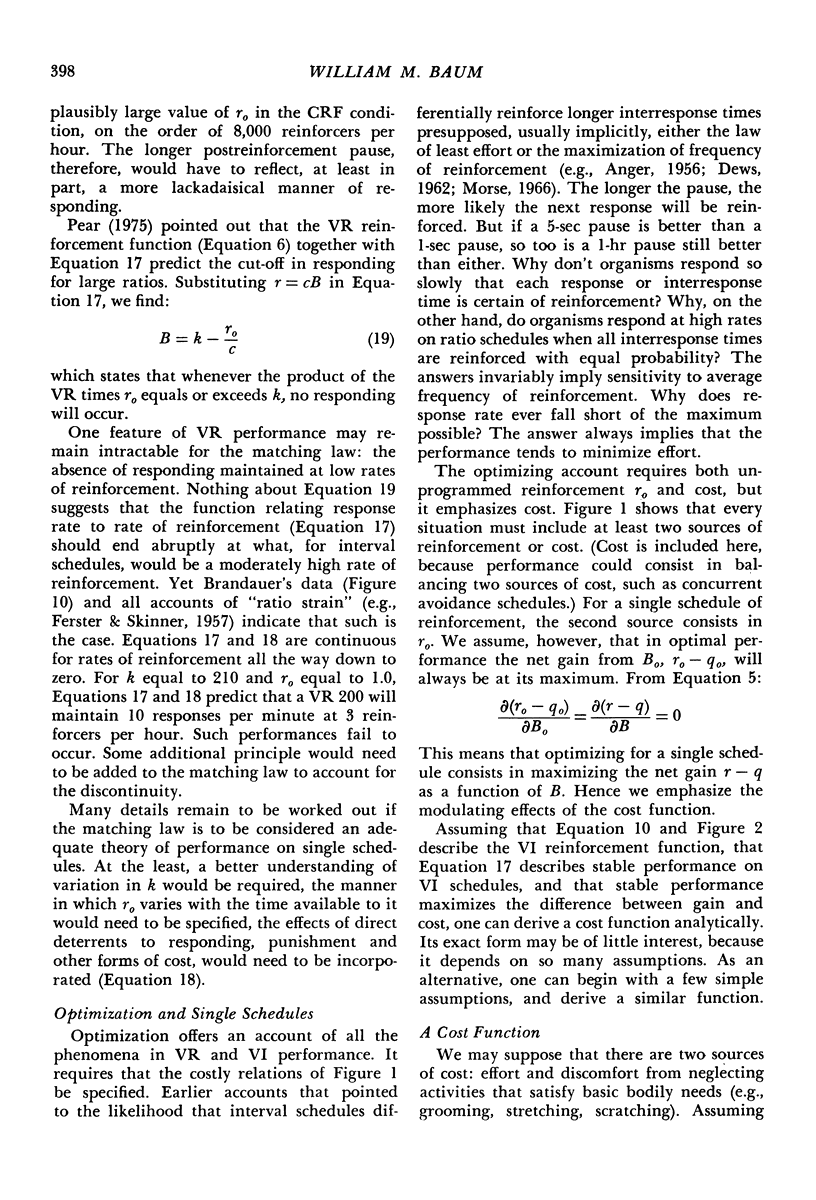
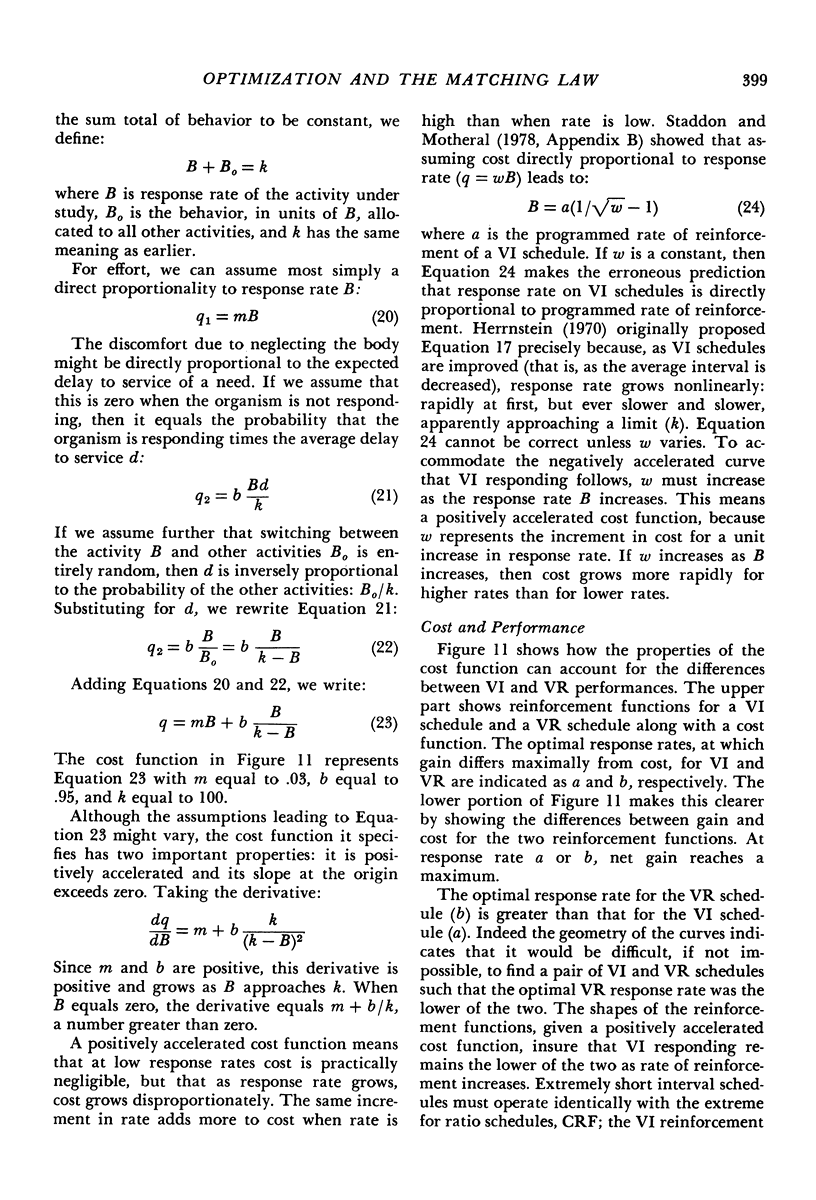
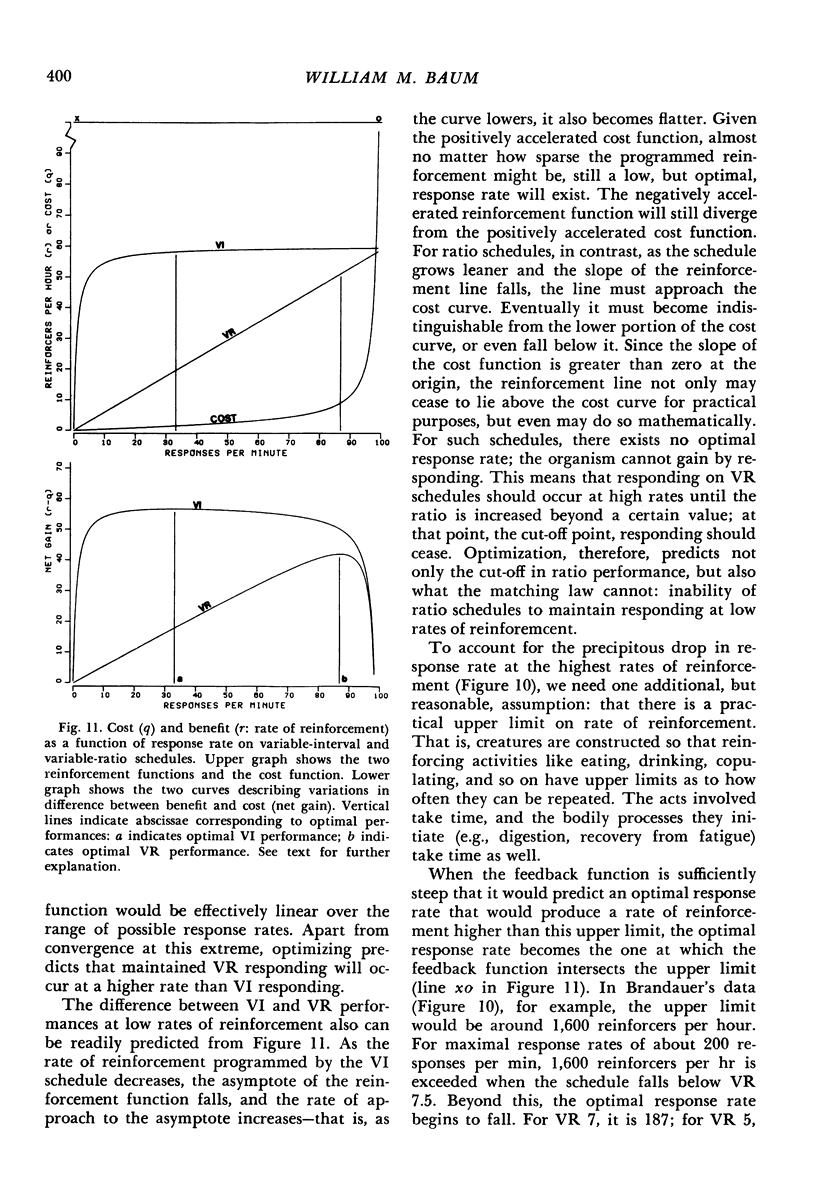
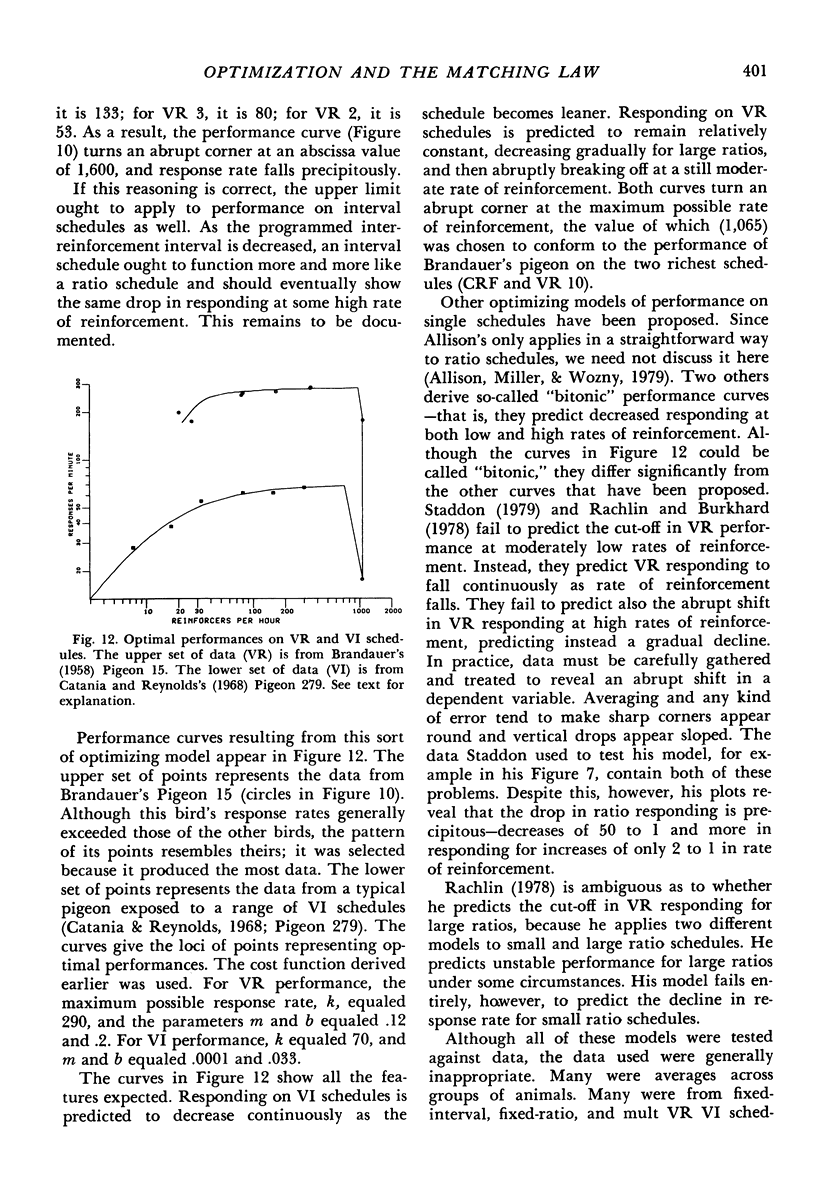
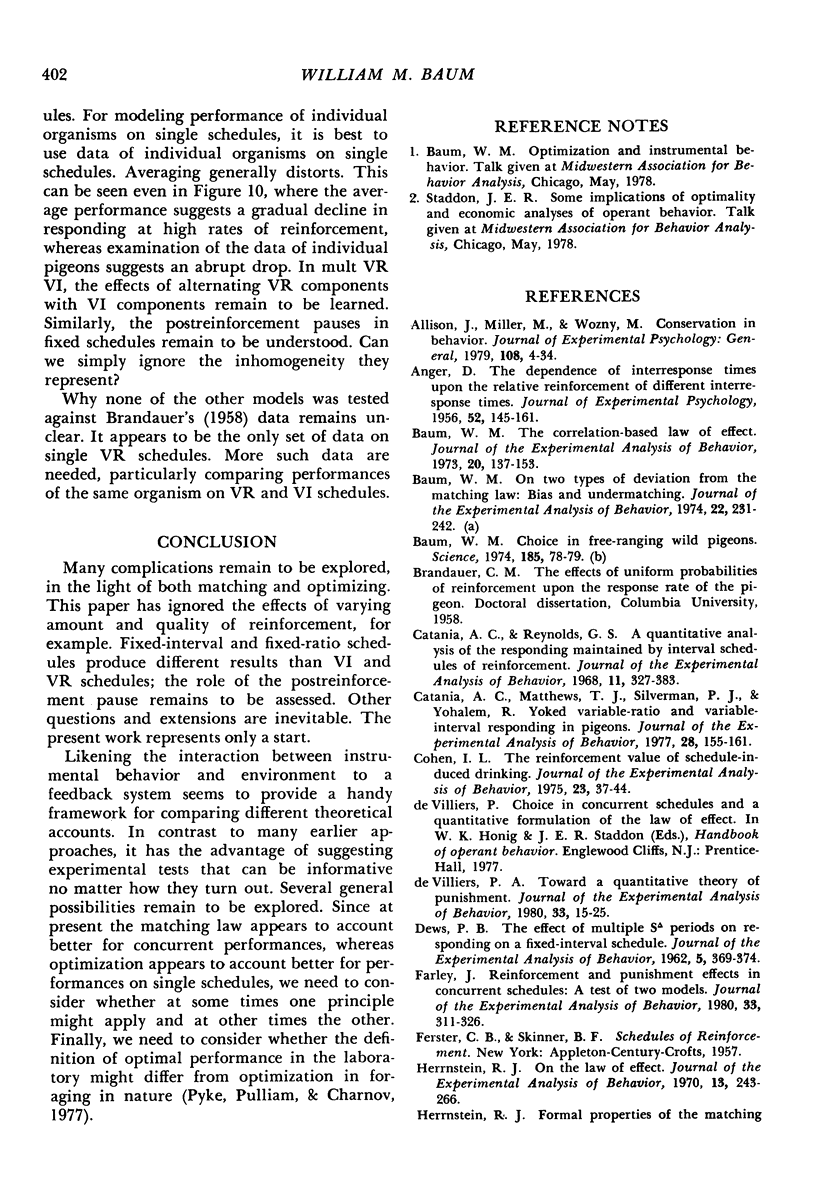
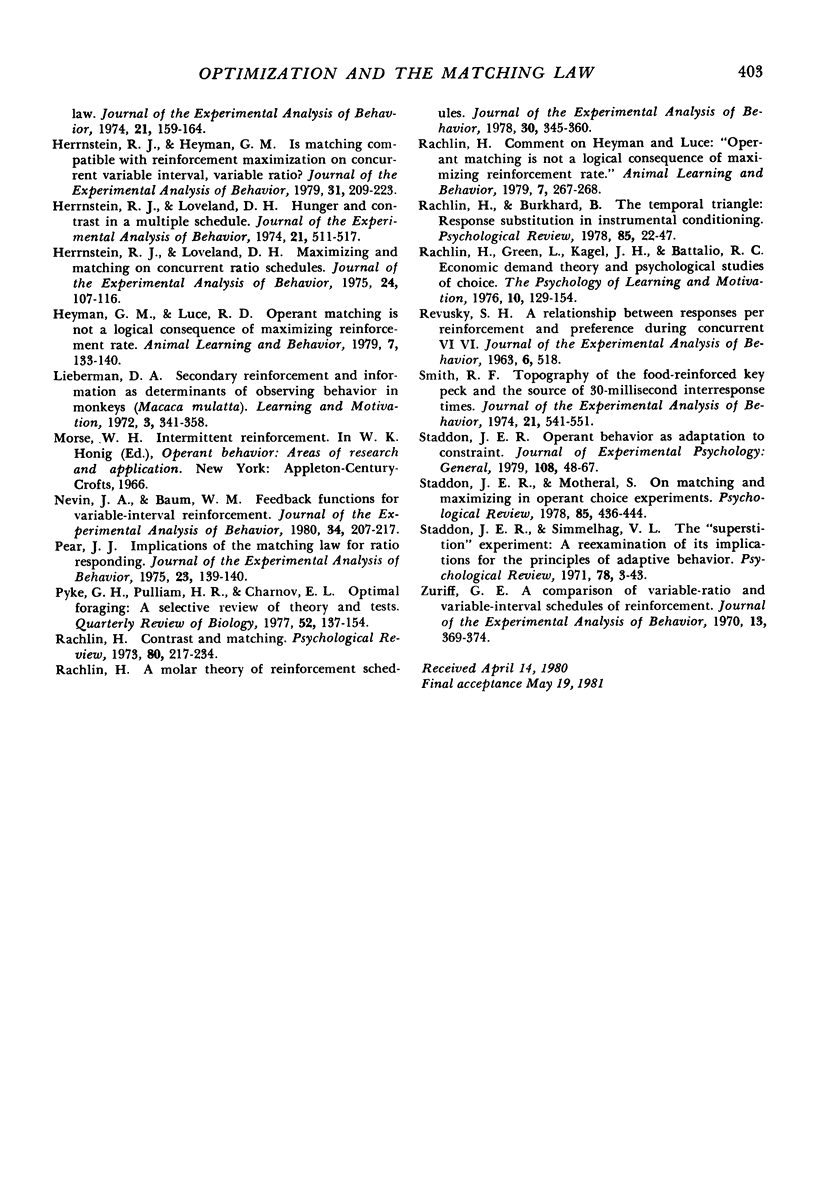
Selected References
These references are in PubMed. This may not be the complete list of references from this article.
- ANGER D. The dependence of interresponse times upon the relative reinforcement of different interresponse times. J Exp Psychol. 1956 Sep;52(3):145–161. doi: 10.1037/h0041255. [DOI] [PubMed] [Google Scholar]
- Baum W. M. Choice in free-ranging wild pigeons. Science. 1974 Jul 5;185(4145):78–79. doi: 10.1126/science.185.4145.78. [DOI] [PubMed] [Google Scholar]
- Baum W. M. On two types of deviation from the matching law: bias and undermatching. J Exp Anal Behav. 1974 Jul;22(1):231–242. doi: 10.1901/jeab.1974.22-231. [DOI] [PMC free article] [PubMed] [Google Scholar]
- Baum W. M. The correlation-based law of effect. J Exp Anal Behav. 1973 Jul;20(1):137–153. doi: 10.1901/jeab.1973.20-137. [DOI] [PMC free article] [PubMed] [Google Scholar]
- Catania A. C., Matthews T. J., Silverman P. J., Yohalem R. Yoked variable-ratio and variable-interval responding in pigeons. J Exp Anal Behav. 1977 Sep;28(2):155–161. doi: 10.1901/jeab.1977.28-155. [DOI] [PMC free article] [PubMed] [Google Scholar]
- Catania A. C., Reynolds G. S. A quantitative analysis of the responding maintained by interval schedules of reinforcement. J Exp Anal Behav. 1968 May;11(3 Suppl):327–383. doi: 10.1901/jeab.1968.11-s327. [DOI] [PMC free article] [PubMed] [Google Scholar]
- Cohen I. L. The reinforcement value of schedule-induced drinking. J Exp Anal Behav. 1975 Jan;23(1):37–44. doi: 10.1901/jeab.1975.23-37. [DOI] [PMC free article] [PubMed] [Google Scholar]
- DEWS P. B. The effect of multiple S delta periods on responding on a fixed-interval schedule. J Exp Anal Behav. 1962 Jul;5:369–374. doi: 10.1901/jeab.1962.5-369. [DOI] [PMC free article] [PubMed] [Google Scholar]
- Farley J. Reinforcement and punishment effects in concurrent schedules: A test of two models. J Exp Anal Behav. 1980 May;33(3):311–326. doi: 10.1901/jeab.1980.33-311. [DOI] [PMC free article] [PubMed] [Google Scholar]
- Herrnstein R. J. Formal properties of the matching law. J Exp Anal Behav. 1974 Jan;21(1):159–164. doi: 10.1901/jeab.1974.21-159. [DOI] [PMC free article] [PubMed] [Google Scholar]
- Herrnstein R. J., Heyman G. M. Is matching compatible with reinforcement maximization on concurrent variable interval variable ratio? J Exp Anal Behav. 1979 Mar;31(2):209–223. doi: 10.1901/jeab.1979.31-209. [DOI] [PMC free article] [PubMed] [Google Scholar]
- Herrnstein R. J., Loveland D. H. Hunger and contrast in a multiple schedule. J Exp Anal Behav. 1974 May;21(3):511–517. doi: 10.1901/jeab.1974.21-511. [DOI] [PMC free article] [PubMed] [Google Scholar]
- Herrnstein R. J., Loveland D. H. Maximizing and matching on concurrent ratio schedules. J Exp Anal Behav. 1975 Jul;24(1):107–116. doi: 10.1901/jeab.1975.24-107. [DOI] [PMC free article] [PubMed] [Google Scholar]
- Herrnstein R. J. On the law of effect. J Exp Anal Behav. 1970 Mar;13(2):243–266. doi: 10.1901/jeab.1970.13-243. [DOI] [PMC free article] [PubMed] [Google Scholar]
- Nevin J. A., Baum W. M. Feedback functions for variable-interval reinforcement. J Exp Anal Behav. 1980 Sep;34(2):207–217. doi: 10.1901/jeab.1980.34-207. [DOI] [PMC free article] [PubMed] [Google Scholar]
- Pear J. J. Implications of the matching law for ratio responding. J Exp Anal Behav. 1975 Jan;23(1):139–140. doi: 10.1901/jeab.1975.23-139. [DOI] [PMC free article] [PubMed] [Google Scholar]
- REVUSKY S. H. A RELATIONSHIP BETWEEN RESPONSES PER REINFORCEMENT AND PREFERENCE DURING CONCURRENT. VI. J Exp Anal Behav. 1963 Oct;6:518–518. doi: 10.1901/jeab.1963.6-518. [DOI] [PMC free article] [PubMed] [Google Scholar]
- Rachlin H. A molar theory of reinforcement schedules. J Exp Anal Behav. 1978 Nov;30(3):345–360. doi: 10.1901/jeab.1978.30-345. [DOI] [PMC free article] [PubMed] [Google Scholar]
- Smith R. F. Topography of the food-reinforced key peck and the source of 30-millisecond interresponse times. J Exp Anal Behav. 1974 May;21(3):541–551. doi: 10.1901/jeab.1974.21-541. [DOI] [PMC free article] [PubMed] [Google Scholar]
- Zuriff G. E. A comparison of variable-ratio and variable-interval schedules of reinforcement. J Exp Anal Behav. 1970 May;13(3):369–374. doi: 10.1901/jeab.1970.13-369. [DOI] [PMC free article] [PubMed] [Google Scholar]
- de Villiers P. A. Toward a quantitative theory of punishment. J Exp Anal Behav. 1980 Jan;33(1):15–25. doi: 10.1901/jeab.1980.33-15. [DOI] [PMC free article] [PubMed] [Google Scholar]


